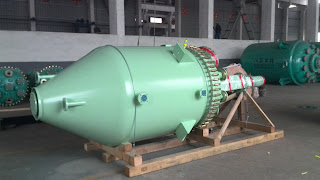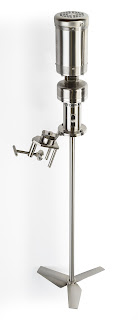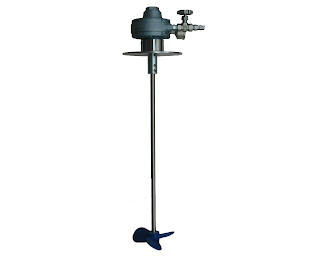The main technological facilities of the Alumina refinery include various types of stationery and rotary processing equipment such as mills, conveyors, ball mills, tanks, pumps, piping, agitators, evaporators, heat exchangers, alkalis, filters, and calciners. The majority of the alumina refinery's processing plants are tailor-made for the plant's needs.
Equipment designers and process experts believe that the design of agitators to mix slurry with the desired degree of agitation is considered a complicated and delicate issue. In the previous publication, this post explained the terminology used in the construction of agitators for mixing sludge.
Given the need for suitable agitators for the alumina refinery, it was essential to briefly describe the mixing process and to develop the basic guidelines and associated parameters for driving calculations for slurry mixers suitable for the various conditions. treatment in the alumina refinery.
MIXING PROCESSES
The alumina refinery can be roughly divided into two main treatment areas -
(i) red zone and
(ii) white area
In the red section of the alumina refinery, the main tasks of agitators for such tanks are:
- Keep the solids in suspension
- Homogeneity of slurry
The agitator components primarily comprise a turbine, a shaft, a transmission and a drive motor capable of meeting the process requirements. The mixing process to hold the solids in suspension is known as the bottom suspension. This process keeps the solid particles just above the bottom of the container and prevents sedimentation of the solids.
The other method used for the homogeneity of the suspension is generally known as a solid tank suspension. In the case of a solid tank suspension device, the agitation level is close to 10. Therefore, the agitator always moves the bottom solids of the tank to the upper level, which allows it to be transferred to the tank. the next line tank.
Due to the actual properties of alumina hydrate or the size of very large capacity tanks, the following additional challenges for the designer in the development of agitators for use in the white zone of the alumina refinery arise :
- The low shear rate of selected fuels to avoid abrasion of solid crystals
- Low energy consumption
The typical physical properties of sludge components are given below -
- The density of the aluminate liquor: 1.23 - 1.29 (liquid)
- The density of alumina hydrate: 2.42 (solids)
- bauxite: 2.58 (solids)
- Bauxite residue (red mud): 2.3 (solids)
Types of agitators/mixers
There are three
types of agitators that are used in alumina refineries -
- Top entry mixer
- Side entry mixer
In the alumina refinery, top entry agitators are preferred over other options.
DESIGN ELEMENTS OF MIXER
The following are the main elements of the mixer design -
- impellers
- waves
- Training set
- process conditions
- Properties of the wheel performance
- Mechanical construction
FACTORS AFFECTING ENERGY CONSUMPTION
The energy consumption for stirring/mixing is influenced by the following main factors:
- Specific gravity
- Viscosity
- Wheel type
- The diameter of the wheel
- Wheel position
- Writing speed
- Baffles in the tank
The capacity of the turbine and the capacity of the agitator pump are calculated using the following mathematical relationships:
Power of the wheel, P = Np x N3 x D5
Pumping capacity of the turbine, Q = Nq x N x D3
MECHANICAL DESIGN BY IMPELLERS
The wheel is the most important element of the mixer. Only the turbine generates the required process result by converting the rotational energy of the shaft into the required flow and shear ratios. The efficiency of the process requires the adaptation of the properties of the wheel to the requirements of the process. The ideal wheel for flow-controlled applications must have the following basic features:
- Low power - Np
- High flow - Nq
- In weightlessness
- Low fluid forces
- Cost-effective
Therefore,
agitator manufacturers must take reasonable precautions when selecting/designing turbines, taking into account the critical aspects above, as the coefficient of performance and flow rate depend on the type of wheel.



















